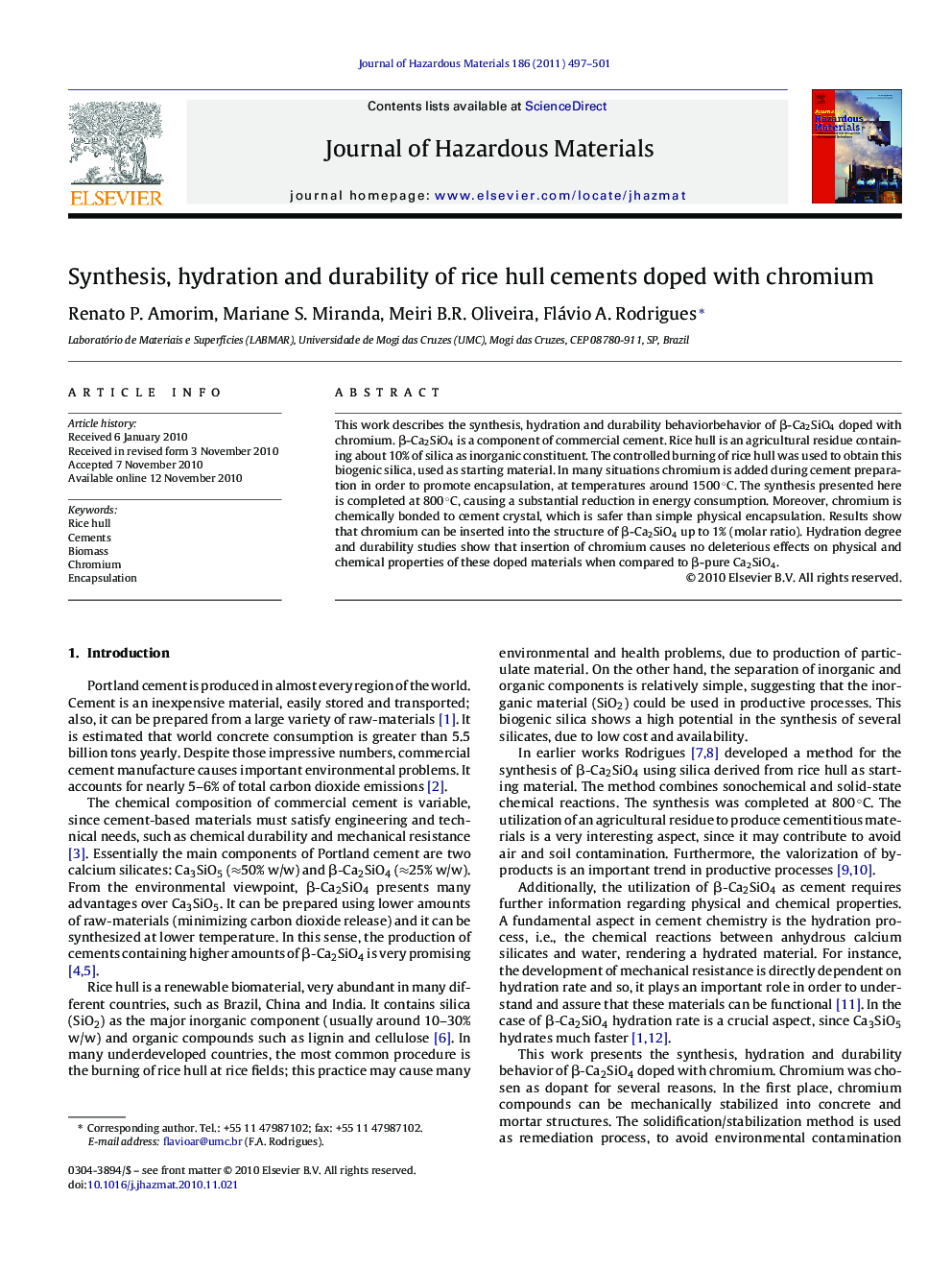| Article ID | Journal | Published Year | Pages | File Type |
|---|---|---|---|---|
| 10372755 | Journal of Hazardous Materials | 2011 | 5 Pages |
Abstract
This work describes the synthesis, hydration and durability behaviorbehavior of β-Ca2SiO4 doped with chromium. β-Ca2SiO4 is a component of commercial cement. Rice hull is an agricultural residue containing about 10% of silica as inorganic constituent. The controlled burning of rice hull was used to obtain this biogenic silica, used as starting material. In many situations chromium is added during cement preparation in order to promote encapsulation, at temperatures around 1500 °C. The synthesis presented here is completed at 800 °C, causing a substantial reduction in energy consumption. Moreover, chromium is chemically bonded to cement crystal, which is safer than simple physical encapsulation. Results show that chromium can be inserted into the structure of β-Ca2SiO4 up to 1% (molar ratio). Hydration degree and durability studies show that insertion of chromium causes no deleterious effects on physical and chemical properties of these doped materials when compared to β-pure Ca2SiO4.
Related Topics
Physical Sciences and Engineering
Chemical Engineering
Chemical Health and Safety
Authors
Renato P. Amorim, Mariane S. Miranda, Meiri B.R. Oliveira, Flávio A. Rodrigues,
